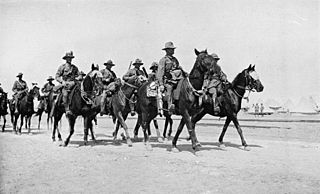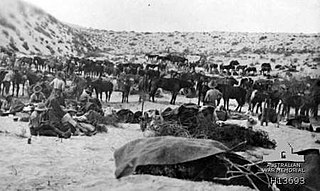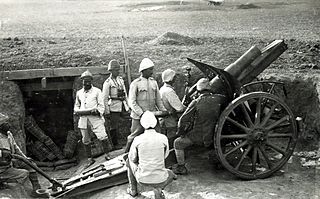 W
WThe Action of Agagia took place east of Sidi Barrani in Egypt on 26 February 1916, during the Senussi Campaign between German and Ottoman-instigated Senussi forces and the British army in Egypt. On 11 December 1915, a British column had been attacked at Duwwar Hussein along the Matruh–Sollum track. In the Affair of Wadi Senba, the Senussi were defeated and two days later a Senussi attack at Wadi Hasheifiat was repulsed. The British returned to Matruh until 25 December, then surprised the Senussi at the Affair of Wadi Majid but the Senussi got away. At the Affair of Halazin on 23 January, the Senussi were defeated and again slipped away.
 W
WThe Battle of Bir el Abd or the Abd well was fought between the forces of the British Empire and the Ottoman Turkish Empire, during the Sinai and Palestine Campaign of the First World War.
 W
WThe Raid on Jifjafa was a long range pre-emptive operation by a composite formation of the British Empire against Ottoman forces at the Jifjafa well in the Sinai Desert. It was part of the Sinai and Palestine Campaign of World War I.
 W
WThe Battle of Katia, also known as the Affair of Qatia by the British, was an engagement fought east of the Suez Canal and north of El Ferdan Station, in the vicinity of Katia and Oghratina, on 23 April 1916 during the Defence of the Suez Canal Campaign of World War I. An Ottoman force led by the German General Friedrich Freiherr Kress von Kressenstein made a surprise attack on three and a half squadrons of the British 5th Mounted Brigade, which was widely scattered to the east of Romani. The mounted brigade had been ordered to the area to protect the new railway and water pipeline being built from Kantara on the Suez Canal, as this infrastructure extended out past the Canal's zone of defences into the Sinai Peninsula towards Romani. Kress Von Kressenstein's attack was completely successful, decimating the equivalent of little more than a regiment. On the same day, an associated Ottoman attack on Duidar, very close to the Suez Canal, failed when it met with strong British opposition.
 W
WThe Battle of Magdhaba took place on 23 December 1916 during the Defence of Egypt section of the Sinai and Palestine Campaign in the First World War. The attack by the Anzac Mounted Division took place against an entrenched Ottoman Army garrison to the south and east of Bir Lahfan in the Sinai desert, some 18–25 miles (29–40 km) inland from the Mediterranean coast. This Egyptian Expeditionary Force (EEF) victory against the Ottoman Empire garrison also secured the town of El Arish after the Ottoman garrison withdrew.
 W
WConflicts took place in North Africa during World War I (1914–1918), between the Entente and the Central powers. The Senussi of Libya sided with the Ottoman Empire against the British Empire and the Kingdom of Italy. On 14 November 1914, the Ottoman Sultan proclaimed a jihad and sought to create a diversion to draw British troops from the Sinai and Palestine Campaign. The Italian state wished to preserve the gains made in the Italo-Turkish War. The Senussi Campaign took place in north Africa, from 23 November 1915 – February 1917.
 W
WThe Battle of Romani was the last ground attack of the Central Powers on the Suez Canal at the beginning of the Sinai and Palestine Campaign during the First World War. The battle was fought between 3 and 5 August 1916 near the Egyptian town of Romani and the site of ancient Pelusium on the Sinai Peninsula, 23 miles (37 km) east of the Suez Canal. This victory by the 52nd (Lowland) Division and the Anzac Mounted Division of the Egyptian Expeditionary Force (EEF) over a joint Ottoman and German force, which had marched across the Sinai, marked the end of the Defence of the Suez Canal campaign, also known as the Offensive zur Eroberung des Suezkanals and the İkinci Kanal Harekâtı, which had begun on 26 January 1915.
 W
WThe Sinai and Palestine campaign of the Middle Eastern theatre of World War I was fought by the Arab Revolt and the British Empire, against the Ottoman Empire and its Imperial German allies. It started with an Ottoman attempt at raiding the Suez Canal in 1915, and ended with the Armistice of Mudros in 1918, leading to the cession of Ottoman Syria.